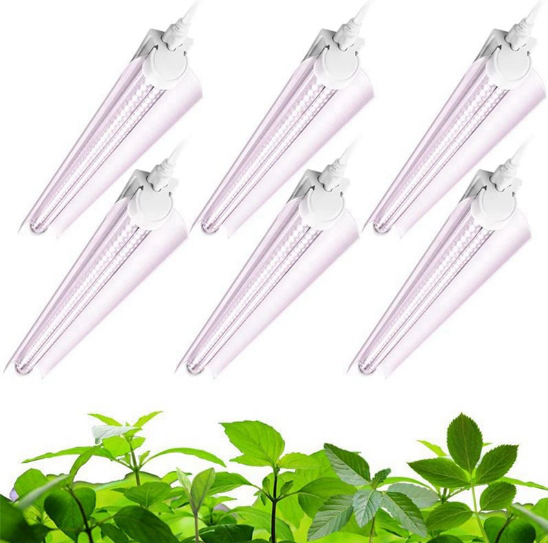
The rise of indoor cultivation and the increasing demand for year-round produce have propelled the development of energy-saving LED plant lights. In this industry news article, we will explore the advantages and advancements of LED plant lights, specifically focusing on their full spectrum capabilities and energy-saving features. Join us as we delve into how these innovative lighting solutions are revolutionizing the way plants are grown indoors.
Full Spectrum LED plant lights: Unleashing the Power of Balanced Lighting led plant lights are designed to provide plants with the precise light spectrums required for photosynthesis, growth, and flowering. Full spectrum LED plant lights mimic the natural sunlight spectrum, offering a balanced ratio of blue, red, and white light wavelengths. This ensures that plants receive all the necessary light energy they need to flourish, resulting in healthier and more robust growth. The full spectrum capability of these lights makes them ideal for all stages of plant cultivation, from seedlings to flowering.
Energy-Saving Advantages: A Greener Solution for Indoor Cultivation Compared to traditional lighting technologies like fluorescent or high-pressure sodium lamps, LED plant lights boast exceptional energy-saving advantages. These lights are highly efficient, converting more electrical energy into usable light while minimizing heat production. LED plant lights consume significantly less electricity, leading to reduced energy costs for growers. Moreover, their energy-saving properties contribute to lower carbon emissions and a smaller environmental footprint, aligning with the industry's growing focus on sustainability.
Tailored Light Spectrum for Optimal Growth and Yield Full spectrum LED plant lights offer growers the ability to customize and optimize the light spectrum according to the specific requirements of different plants. By adjusting the light intensity and color temperature, growers can precisely tailor the lighting environment to promote vigorous growth, accelerate flowering, and maximize yield. This level of customization is particularly essential for horticultural practices that involve growing diverse plant species or experimenting with new cultivars.
Versatility and Application in Indoor Cultivation LED plant lights find applications in a wide range of indoor cultivation settings, including home gardens, commercial greenhouses, vertical farms, and research facilities. Their compact size, adjustable features, and low heat emission make them ideal for use in controlled environments. Additionally, LED plant lights can be integrated with advanced technologies such as automated light and temperature control systems, enabling efficient and precise management of crop growth conditions.
Conclusion: Energy-saving full spectrum LED plant lights have revolutionized the way plants are cultivated indoors, offering a sustainable and efficient solution for year-round production. With their ability to replicate natural sunlight and provide a tailored light spectrum, LED plant lights promote optimal growth, increased yields, and accelerated flowering. As the demand for indoor cultivation continues to grow, these innovative lighting solutions will play a crucial role in meeting the challenges of sustainable agriculture while ensuring consistent and high-quality produce.
